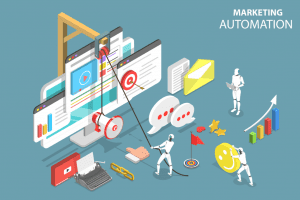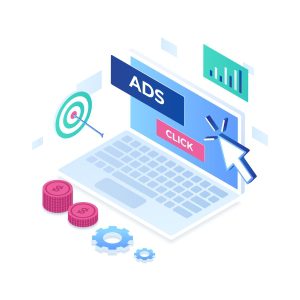
Choosing Your Advertising Agency Partnership: Key Considerations for Success
Selecting the right advertising agency can significantly influence the success of your marketing endeavors. These agencies possess exclusive proficiency, ensure cost-effectiveness, facilitate scalability, deliver industry insights, and produce quantifiable outcomes. Consequently, forging an advertising agency partnership can enable you to efficiently engage your intended audience, foster brand recognition, and generate sales. Nonetheless, with numerous agencies available, ensuring the most suitable agency partnerships for your business can be a daunting task.
In this article, we will delve into essential markers to consider when choosing an advertising agency that aligns seamlessly with your business objectives:
1. Location
When choosing an advertising agency, you should deliberate on its geographical location and relevance to your target market. While numerous agencies can operate remotely or cater to a global clientele, opting for an agency with a physical presence in your target market holds certain advantages. Firstly, a local agency exhibits an enhanced understanding of regional market dynamics, consumer behavior, and cultural subtleties. They can effectively utilize their local expertise to craft advertising campaigns that deeply resonate with your intended audience’s specific preferences and needs.

Additionally, a nearby agency allows for easier and more efficient collaboration. Engaging in in-person meetings and conducting on-site visits can foster a more profound comprehension of your business and cultivate robust collaborative partnerships. Such interactions allow the agency to immerse themselves in your brand’s ecosystem, acquiring firsthand familiarity with your offerings and effectively harmonizing their creative and strategic endeavors with your overarching goals.
Nevertheless, it is important to acknowledge that geographical proximity is not always a decisive factor, particularly in the current digital era. With advanced communication tools and technologies, agencies can effectively collaborate and deliver results regardless of their location. It ultimately depends on the nature of your business, target market, and the level of personal interaction and local knowledge you prioritize.
2. Expertise and Industry Knowledge
While evaluating prospective agency partnerships, thoroughly gauge their industry-specific experience and proficiency. Seek out agencies that possess a proven track record of accomplishments in collaborating with businesses like yours. Their expertise should extend to a comprehensive understanding of your target audience, prevailing market trends, and competitive landscape.
An agency equipped with extensive knowledge will contribute invaluable perspectives and aid in formulating customized advertising strategies that align with your unique objectives. Moreover, evaluate the agency’s proficiency across diverse advertising channels, encompassing digital, print, television, radio, and outdoor platforms.
3. Track Record and Portfolio
Review the agency’s track record and portfolio of past work. Reviewing the agency’s track record and portfolio allows you to assess their past performance and success. Request case studies or examples of campaigns they have executed for similar clients. Pay careful attention to the outcomes they have attained, including increased brand visibility, amplified conversions, or enhanced sales figures. By examining their portfolio, you can gain insights into their creativity, strategic acumen, and capacity to deliver results that harmonize with your objectives.
4. Range of Services
Take into account the breadth of services provided by the advertising agency and assess their compatibility with your marketing requirements. Certain agencies specialize in distinct domains, such as digital advertising, social media marketing, content creation, or traditional media buying. Evaluate your specific needs and ascertain that the agency can deliver a comprehensive range of services to fulfill your objectives. Opting for a full-service agency can guarantee a holistic approach to your marketing endeavors and maintain consistency across diverse channels.
5. Communication and Collaboration
Effective communication and collaboration are key to a successful agency partnerships. Evaluate their communication style and responsiveness during the evaluation process. Are they attentive to your ideas and concerns? Do they actively seek your input and provide feedback? Clear and open lines of communication will facilitate a productive working relationship and ensure that your objectives and feedback are understood and incorporated into the campaigns.
6. Creativity and Innovation
Creativity and innovation are crucial elements in successful advertising campaigns. Look for agencies that demonstrate a track record of creativity and innovative thinking in their work. Review their previous campaigns to gauge their ability to come up with original and impactful ideas. A creative agency will bring fresh perspectives and unique concepts to your campaigns, helping your brand stand out and capture the attention of your target audience.
7. Budget and Costs
Consider your budget and the agency’s pricing structure. Different agencies may have various fee structures, such as hourly rates, retainer fees, or project-based pricing. Have an open discussion about your budget constraints and ensure that the agency can deliver the desired results within your financial parameters. While it’s important to find a cost-effective solution, remember that quality and expertise should not be compromised solely based on cost.
8. Client References and Reviews

Gather client references or seek out reviews and testimonials from previous clients. By doing so, you can obtain invaluable insights into the agency’s standing, level of professionalism, and client contentment. Connect with present or past clients to gather firsthand insights into their experiences collaborating with the agency. Inquire about their satisfaction levels, the agency’s adherence to deadlines, and their overall impression of the agency’s performance. Client feedback serves as a valuable resource for obtaining a comprehensive understanding of the agency’s capabilities, strengths, and areas for improvement.
9. Cultural Fit
Consider the cultural fit between your company and the advertising agency. Evaluate their values, work ethics, and company culture to ensure compatibility. A strong cultural fit will foster a harmonious and collaborative working environment. Establishing a shared understanding and synergy between the agency and your brand’s vision, values, and target audience facilitates the creation of campaigns that authentically embody your brand’s identity and strike a chord with your audience.
Bottom Line
Partnering with the right advertising agency carries immense weight in determining the success of your marketing efforts. By meticulously assessing these pivotal elements, you can make a well-informed decision when selecting the advertising agency that best aligns with your business.
Remember to consider the agency’s expertise, track record, range of services, communication style, creativity, budget, client references, and cultural fit to ensure a successful and productive partnership.










 You’re not going to be able to optimize your marketing efforts if you’re unable to identify existing issues and challenges facing your marketing process. Collect and
You’re not going to be able to optimize your marketing efforts if you’re unable to identify existing issues and challenges facing your marketing process. Collect and 











 by creating more location-based content or even by opening a store in that location.
by creating more location-based content or even by opening a store in that location.




